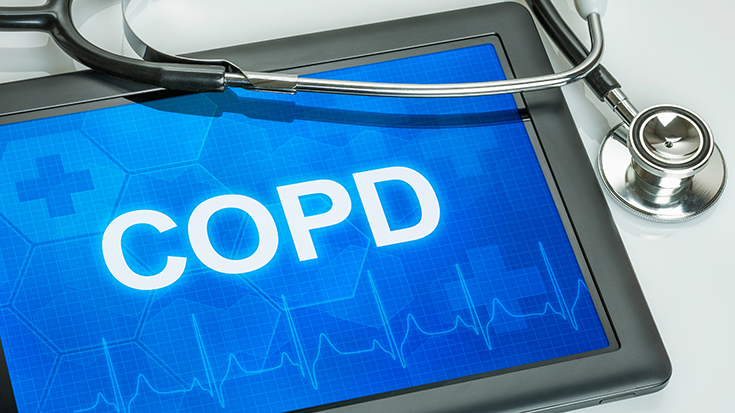
By Debbie Bunch
June 30, 2025
Passive Digital Marker May Predict Asthma in Kids
A new passive digital marker, based on a combination of routinely collected medical history data, may help predict which children are at risk of developing asthma.
The tool was developed by researchers from the Indiana University School of Medicine, utilizing a modified version of the Pediatric Asthma Risk Score and electronic health record data.
“Our hope is that using the childhood asthma passive digital marker in clinical practice will improve the early detection of asthma risk in high-risk children, allowing for earlier interventions that could improve asthma control and lessen the future risk of hospitalization,” said study author Arthur Owora, PhD. “This would be a win-win scenario for at-risk children, their parents, primary care physicians, and the health care system as a whole.”
The study, which involved records on nearly 70,000 kids, found the passive digital marker was more accurate in predicting which children would go on to develop asthma between the ages of four and 11 than the traditional Pediatric Asthma Risk Score.
The investigators now plan to conduct a randomized clinical trial to determine if the marker can increase the rate of early childhood asthma diagnoses in high-risk children and examine whether the marker reduces the time between when asthma criteria are met and a formal diagnosis is made.
The study was supported by a grant from the National Institutes of Health and published by eClinicalMedicine. Read Press Release Read Full Paper

Increase in Tobacco Tax and Cessation Spending Efforts Might Help Kick the Habit
What does it take to motivate smokers to kick the habit? A new study out of California suggests a massive increase in tobacco taxes, coupled with an increase in spending on tobacco cessation efforts, can do the trick.
In 2016, California hiked the tax on tobacco by more than 200% via Proposition 56, which voters overwhelmingly approved. Spending on tobacco prevention also increased significantly.
Researchers from the University of California (UC) San Diego and UC San Francisco looked at smoking cessation rates in the three years following the increase and also compared smoking cessation rates in California with those in other states that raised tobacco taxes on a more modest level and states that did not raise them at all. Spending on tobacco prevention in other states was also evaluated.
The investigators found:
- In the three years following Proposition 56, the average price of cigarettes in California was 30.8% higher than in the three years before the initiative passed, after adjusting for inflation.
- In contrast, prices only increased by 6.3% on average across the 18 other states that raised their taxes.
- The three-month quit rate in California increased from 11.5% in the three years prior to the passage of Proposition 56 to 14.2% in the three years after.
- Smoking quit rates were nearly unchanged in the 18 other states (including the District of Columbia) that raised their tobacco taxes at least once during the study period.
- In the 32 states that did not raise tobacco taxes, quit rates declined significantly, from 9.5% to 9.0%.
- California saw a 271.9% increase in tobacco prevention spending per capita in the study period.
- In contrast, other states that raised taxes saw a 12.8% decrease in spending, while states that did not raise taxes saw an 11.2% decrease.
- Even among those in California who did not quit, the percentage of daily smokers decreased.
“Raising tobacco excise taxes is one of the main public health tools for reducing smoking prevalence,” said study author Shu-Hong Zhu, PhD, from UC San Diego. “But to achieve a measurable increase in quitting on a population level, you may have to go big.”
The study was published by the Journal of the National Cancer Institute. Read Press Release Read Full Paper

Digital Inhaler May Predict AECOPDs
A digital inhaler that measures peak inspiratory flow (PIF), inhalation volume, inhalation duration, time to peak inhalation, and inhaler use was able to predict which COPD patients were at imminent risk for an acute exacerbation in a study conducted by researchers from the University of North Carolina, Chapel Hill School of Medicine, Teva Branded Pharmaceutical Products, and Wake Forest University.
Participants in Phase 4, an open-label, three-month pilot study, were given the digital inhaler for use as a primary rescue medication. They also received regular telephone follow-ups to assess their conditions.
The investigators analyzed recorded inhaler use from 9,649 inhalations among 40 participants. Results showed statistically significant reductions in inhalation volume (1.4L vs. 1.1L), inhalation duration (1875msec vs. 1492.1msec), and time to peak inhalation (500msec vs. 376.3msec) during the 14 days preceding an acute exacerbation of COPD (AECOPD). No significant changes were seen in PIF (67.2 vs. 63.3) or the number of inhalations per day (2.7 vs. 3.7).
Although the authors note that their study was conducted among only a small group of patients, they believe the findings hold promise for the use of remote monitoring technologies in the care of people with COPD.
“Physiological data captured by a digital inhaler may serve as a valuable remote patient monitoring tool to help support the identification of early or impending AECOPDs among ambulatory COPD patients and monitor COPD disease variability,” they write.
The study was published in the Journal of the COPD Foundation: Chronic Obstructive Pulmonary Diseases. Read Article Read Abstract Read Full Paper








